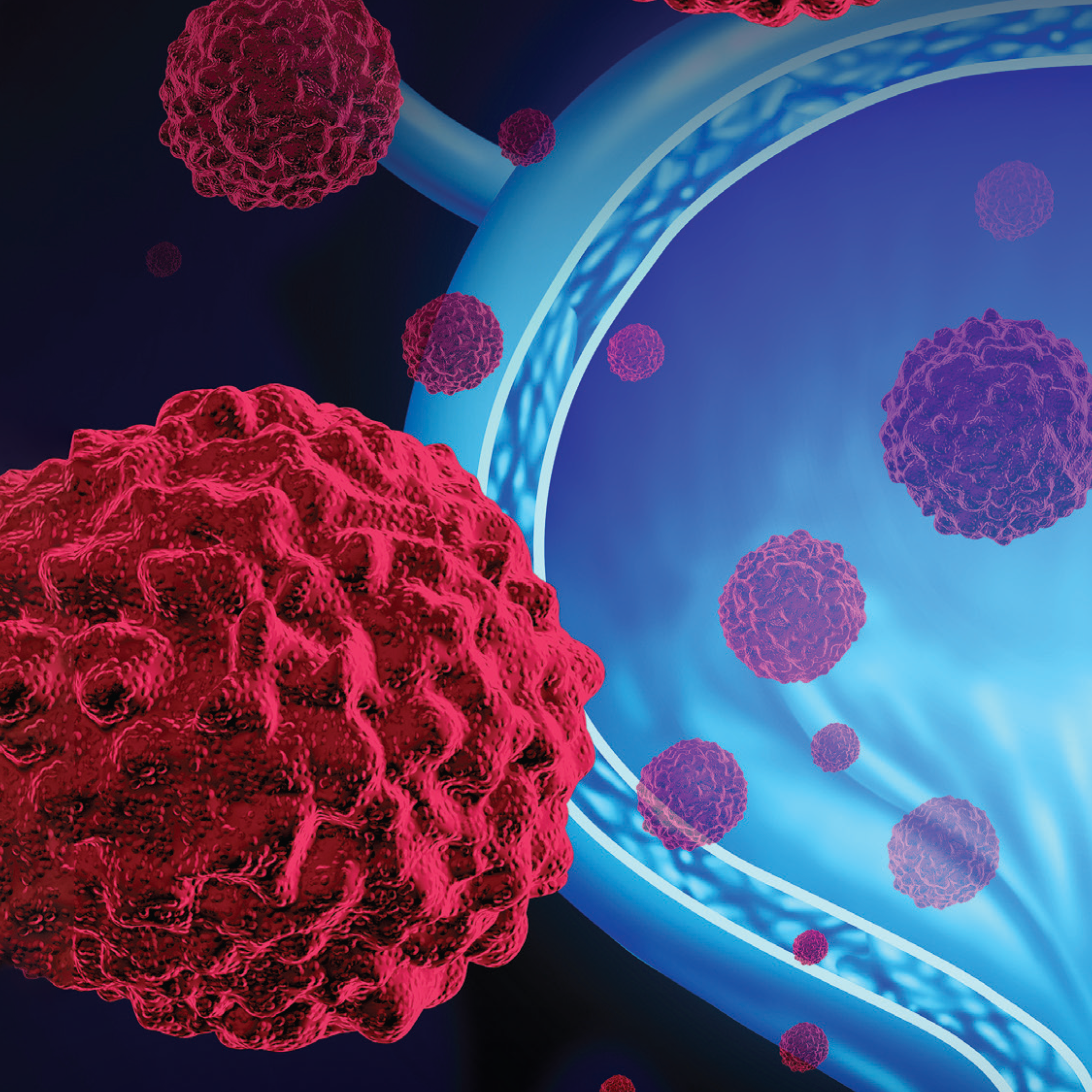BL-B01D1 Shows Preliminary Efficacy, Favorable Safety in Urothelial Cancer
Among patients with locally advanced/metastatic urothelial cancer who received at least one 2.2 mg/kg dose of BL-B01D1, the confirmed ORR was 44.1%.
A median progression-free survival of 7.3 months was observed across the 2.2 mg/kg cohort, with a 6-month rate of 66.4%.

Izalontamab brengitecan (BL-B01D1), an EGFR-human EGFR 3 bispecific antibody-drug conjugate (ADC), displayed promising preliminary activity and a favorable safety profile in a small cohort of patients with locally advanced or metastatic urothelial carcinoma who experienced progression following prior standard therapies, according to results from a single-arm phase 2 study (NCT05785039) published in the Journal of Clinical Oncology.1
Efficacy findings revealed that among 34 patients enrolled on the trial who were treated with 2.2 mg/kg of BL-B01D1, 31 underwent at least 1 radiographic assessment. After a median follow-up of 10.2 months, the confirmed objective response rate (ORR) was 44.1% (95% CI, 27.2%-62.1%), with 15 patients achieving a confirmed partial response (PR). Additionally, among 15 patients who received 1 prior line of chemotherapy, the confirmed ORR was 80% (95% CI, 51.9%-95.7%); 15 achieved a confirmed PR.
The disease control rate (DCR) was 88.2% (95% CI, 72.5%-96.7%) among all patients treated at the 2.2 mg/kg dose. The median duration of response (DOR) was 11.3 months (95% CI, 4.3-not reached [NR]), with a 6-month DOR rate of 69.8% (95% CI, 31.8%-89.4%).
Furthermore, a median progression-free survival (PFS) of 7.3 months (95% CI, 5.5-9.8) was observed across the 2.2 mg/kg cohort, with a 6-month rate of 66.4% (95% CI, 46.4%-80.4%). Moreover, the median overall survival (OS) was 12.3 months (95% CI, 8.5-NR). In patients who received 1 prior line of chemotherapy in the 2.2 mg/kg cohort, the median PFS was NR, with a 6-month rate of 100% (95% CI, 100%-100%).
“[T]his phase 2 trial demonstrated encouraging efficacy and a favorable safety profile for BL-B01D1 in patients with [locally advanced or metastatic urothelial cancer],” Xiaojie Bian, MD, PhD, of the Department of Urology at the Fudan University Shanghai Cancer Center in Shanghai, China, wrote in the publication with study coinvestigators.1 “These findings support further development of this novel ADC and its potential role as part of the standard treatment for this challenging disease.”
The study was conducted in China and enrolled patients 18 to 75 years of age who had experienced disease progression following the most recent prior therapy. Those eligible for enrollment also had an ECOG performance status of 0 to 2, adequate baseline organ function, and a life expectancy of at least 3 months.
Patients received BL-B01D1 at 2.2 (n = 34), 2.5 (n = 4), and 2.75 mg/kg (n = 3) doses intravenously on days 1 and 8 of 3-week cycles. The actual dosage for those enrolled was 1.1 times the compensation coefficient for drug configuration, with dosing calculated based on actual body weight. Dose modifications were permitted for toxicity management.
In the 2.2 mg/kg cohort, the median age was 61.5 years (range, 42-74), and 76.5% of patients were male. A total of 55.9% of patients had an ECOG performance status of 1, an equal number of patients had bladder and upper urinary tract tumors (50% each), and 82.4% had urothelial only histology. Most patients had lung metastases (52.9%), prior platinum- and anti–PD-L1-based anticancer regimens (both 91.2%), and received 2 or more lines of prior chemotherapy (55.9%).
The primary end point of the phase 2a portion of the study was the recommended phase 2 dose.2 For the phase 2b portion of the study, the primary end point was ORR. Secondary end points included PFS, DCR, DOR, and safety, with OS evaluated as an exploratory end point.
The recommended phase 2 dose was initially determined to be 2.75 mg/kg by phase 1 data but was revised to 2.2 mg/kg after all 3 patients who received 2.75 mg/kg experienced grade 3 or higher treatment-related adverse effects (TRAEs). All patients treated with 2.2 mg/kg of BL-B01D1 experienced TRAEs possibly related to the agent, with grade 3 or higher events reported in 61.8% of patients. A total of 44.1% experienced serious TRAEs, with 5.9% and 29.4% of patients requiring dose discontinuations or reductions due to TRAEs, respectively; no deaths related to treatment were reported.
The most common hematologic TRAEs in the 2.2 mg/kg cohort included anemia (88.2%), leukopenia (76.5%), neutropenia (64.7%), thrombocytopenia (64.7%), and decreases in lymphocyte counts (26.5%). Decreased appetite (52.9%), nausea (52.9%), vomiting (32.4%), constipation (26.5%), stomatitis (20.6%), and diarrhea (17.6%) were among the most common gastrointestinal toxicities. Additionally, the most common grade 3 or higher TRAEs included neutropenia (41.2%), anemia (38.2%), leukopenia (38.2%), and thrombocytopenia (32.4%).
References
- Bian X, Yang T, Yin H, et al. Efficacy and safety of BL-B01D1 in patients with locally advanced or metastatic urothelial carcinoma: a phase II clinical trial. J Clin Oncol. Published online October 8, 2025. doi:10.1200/JCO-25-00109
- A study of BL-B01D1 in patients with multiple solid tumors, including locally advanced or metastatic urinary system tumors. ClinicalTrials.gov. Updated September 26, 2025. Accessed October 30, 2025. https://tinyurl.com/yskx7ezj